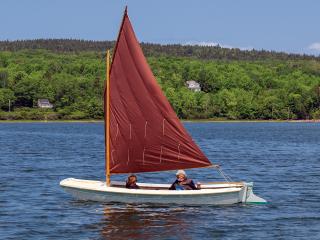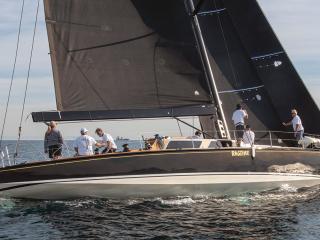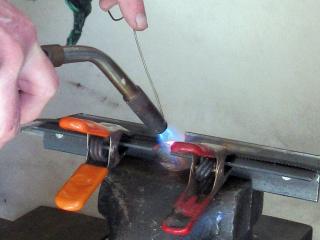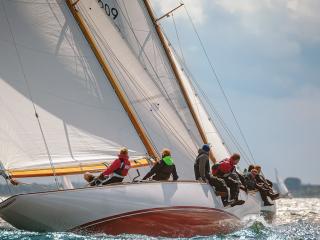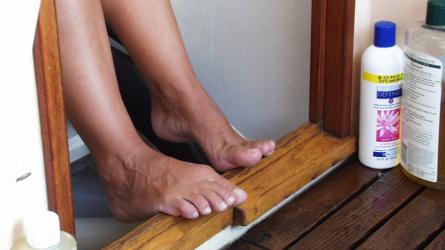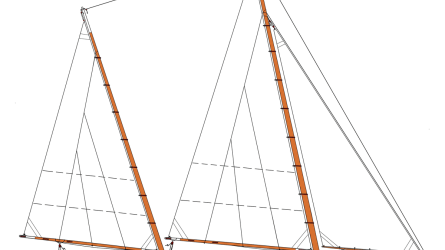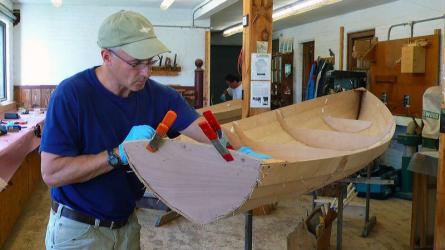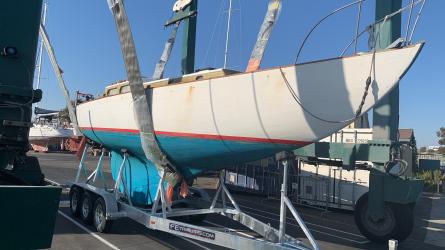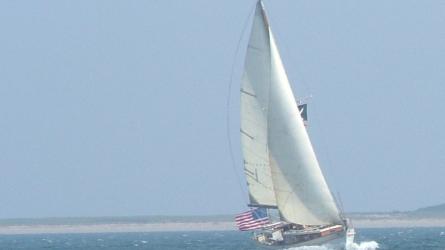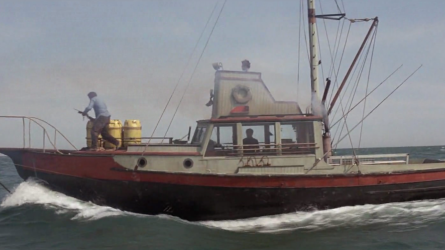September / October 2025
Rot Prevention

WIKIMEDIA COMMONS
Rot prevention in wooden boats begins during construction. Considerations include wise material choices, such as rot-resistant timber and compatible fastenings, and careful planning to avoid standing water and to promote airflow.
Repair and restoration account for most of the work in my shop. Although there are the occasional problems caused by collision or grounding, the work usually entails replacement of rotten components or decomposing fastenings. The degraded wooden items include frames, transoms, decks, keels, coamings, toerails, windshield frames, and more. In retrospect, nearly all of it has been in predictable locations and preventable at the time of construction. It’s not the age of the wood that causes rot. A humble 50-year-old open skiff can be quite sound while a pricey 30-something-year-old runabout can be a compost heap.
Rot prevention should be a fundamental consideration at the beginning of a construction project. One should use the most rot-resistant woods available, avoiding sapwood, painting end grain, properly bedding, and, when possible, pretreating with rot inhibitors such as borate salts. The longevity of a boat is also dependent on keeping water—especially fresh water—from pooling and stagnating inside the boat. Proper drainage and ventilation are thus of paramount importance. Entrapped water and still air promote fungal growth and can turn a wooden hull into a stew pot full of soft components.
The fungi responsible for decay need quite specific conditions to thrive. Wood will decay above 30 percent moisture content. Wood below 20 percent moisture content cannot sustain wood-attacking fungi, nor will waterlogged wood. Moisture contents between 20 percent and 30 percent represent a gray area. Some woods are nearly impervious to rot, while others have little resistance to it.
Generally speaking, decay favors sapwood and heartwood of low durability. It prefers fresh water to salt. Warm, stagnant air, roughly 75–90 degrees F (24–32 degrees C) is necessary to provide the proper conditions for promoting growth of wood-chomping fungi. And, like most sinister agents, it prefers to work in the dark. Change one or more of these prerequisites and you stand a good chance of extending the longevity of your boat.
To read the rest of this article:
Click the button below to log into your Digital Issue Access account.
No digital access? Subscribe or upgrade to a WoodenBoat Digital Subscription and finish reading this article as well as every article we have published for the past 50-years.
ACCESS TO EXPERIENCE
Subscribe Today
1 YEAR SUBSCRIPTION (6 ISSUES)
PLUS ACCESS TO MORE THAN 300 DIGITAL BACK ISSUES
DIGITAL $29.00
PRINT+DIGITAL $42.95
Subscribe
To read articles from previous issues, you can purchase the issue at The WoodenBoat Store link below.
 Purchase this issue from
Purchase this issue from
